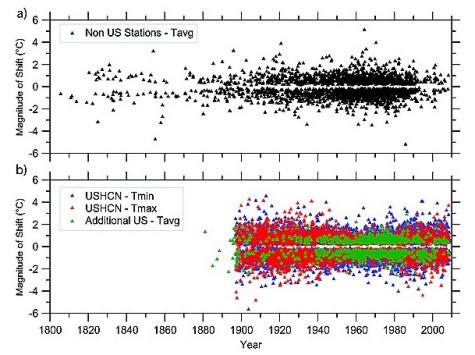Deforestation in Canada: Key myths and facts
At 0.02% of its forested area, deforestation in Canada is among the world’s lowest, yet many myths exist about the state of our forests. The reality is that Canada is a world leader in sustainable forest management. Canadian forests are healthy, productive and thriving.
Deforestation is an important issue, since shrinking forest cover reduces biodiversity, affects soil and water quality, impacts wildlife habitat and influences climate change. The Canadian government carefully monitors and regularly publishes reports on deforestation. Our scientists combine satellite and aerial images with information about regional development, forest ecosystems, natural processes and local conditions to help monitor and manage the health of Canadian forests.
Here are some key facts about Canada’s low levels of deforestation.
Myth: Deforestation in Canada is increasing.
Fact: Canada’s deforestation rate is among the lowest in the world.
The annual deforestation rate in Canada in 2010 was less than 0.02% of our forests and the rate has been declining for over 25 years. In 1990, 64,000 hectares were lost to deforestation and in 2012 this figure dropped to 45,800 hectares.
Today, Canada’s 348 million hectares of forest lands represent about 9% of the world’s forest cover, but account for only 0.3% of global deforestation.
Myth: Logging causes deforestation.
Fact: Harvesting trees does not cause deforestation.
Deforestation only occurs when forests are permanently removed so the land can be used for something else. Harvesting, forest fires and insect infestations do not constitute deforestation, since the affected areas will grow back. According to laws, regulations and policies in place across Canada, all areas harvested on public land must be reforested, either by replanting or through natural regeneration. About 94% of Canada’s forests are on public land.
The conversion of forest to agricultural land is decreasing but it remains the largest contributor to deforestation in Canada. The small contribution the forest sector makes to deforestation is from building permanent logging access roads. Forest harvesting practices in Canada are tightly regulated to ensure long-term sustainability of this important natural resource. Learn more about forest management practices.
Myth: Canada’s boreal forest is at risk.
Fact: Canada responsibly manages our boreal forests to ensure they remain healthy
Almost three-quarters of Canada’s forests lie in the boreal zone. The 2.5 million Canadians who live in this region, including many Aboriginal peoples, rely heavily on the forests for economic stability. Recognizing the many values of the boreal forests, Canada works to balance conservation objectives with economic drivers such as agriculture and resource development. Deforestation in Canada’s boreal zone is low – just 0.3% in total between 1990 and 2008. Read more about Canada’s boreal forest.
Myth: Canada has the world’s worst record when it comes to deforestation.
Fact: Canada is a world leader in sustainable forest management.
Canada has some of the most rigorous laws in the world for protecting forests and ensuring sustainable forest management. We are world leaders in scientific research that informs planning and management practices. Find out about Canadian forestry laws and policies.
Media reports have equated forest cover loss from forest fires, harvesting and insects to deforestation, which is incorrect. The small amount of deforestation that occurs in Canada is primarily driven by resource development, economic growth and the need to build infrastructure. To manage these pressures, provincial governments are increasingly using integrated landscape management (ILM) to plan the land uses over a broad landscape and encourage different users to share infrastructure and minimize deforestation.
Myth: Industrial activity, such as the development of the oil sands, has made Canada the new global leader in deforestation.
Fact: Canada has reduced deforestation over the past 20 years.
Canada is fortunate to be rich in many natural resources, such as trees, water, oil and gas. While resource development and industrial activity have increased deforestation in localized regions, nationwide Canada has been able to consistently reduce deforestation over the past 20 years – a trend that is expected to continue. While oil sands development has increased in recent years, the area of land it occupies is very small relative to the size of Canada’s forests. In fact, the total area of mineable oil sands (i.e., including both developed and undeveloped areas) occupies 480,000 hectares, while Canada has 348 million hectares of forests.
The Canadian Forest Service of Natural Resources Canada is collaborating with the oil and gas sector to identify ways to reduce the amount and impact of development on forest ecosystems and to accelerate the reclamation of land disturbed by mining or oil and gas extraction.
Myth: Canada must preserve our forests untouched or intact to keep them healthy.
Fact: There is no such thing as untouched forest in Canada.
A forest is a living community of organisms that naturally experiences constant change. Over time, forests experience many disturbances (including fire, insects, disease, drought, wind throw, floods and timber harvesting), yet trees continue to grow back naturally. In the forest, nothing is ever static. This is particularly true in the boreal forest, which is ecologically adapted to renew itself through disturbances such as fire. Read more about natural disturbances.
Although many forests are in remote areas, inaccessible to people, human activities such as harvesting do affect other forests. However, modern methods of harvesting trees are often intended to mimic natural disturbances and harvested areas are regrown. Canada’s managed forests will generally grow for 60 to 100 years between harvests, so most managed forest areas return to a natural state for considerable lengths of time. See how harvesting is done in boreal forests








